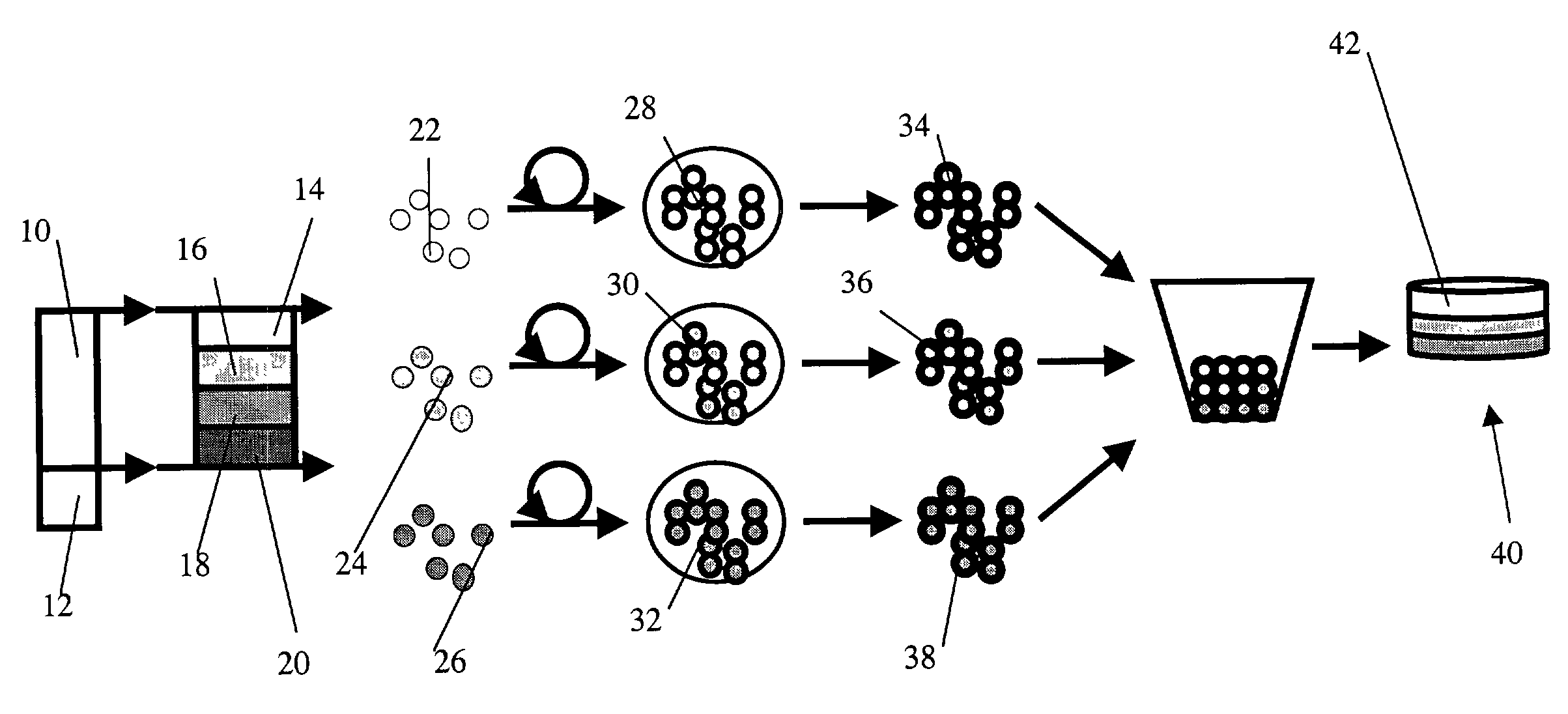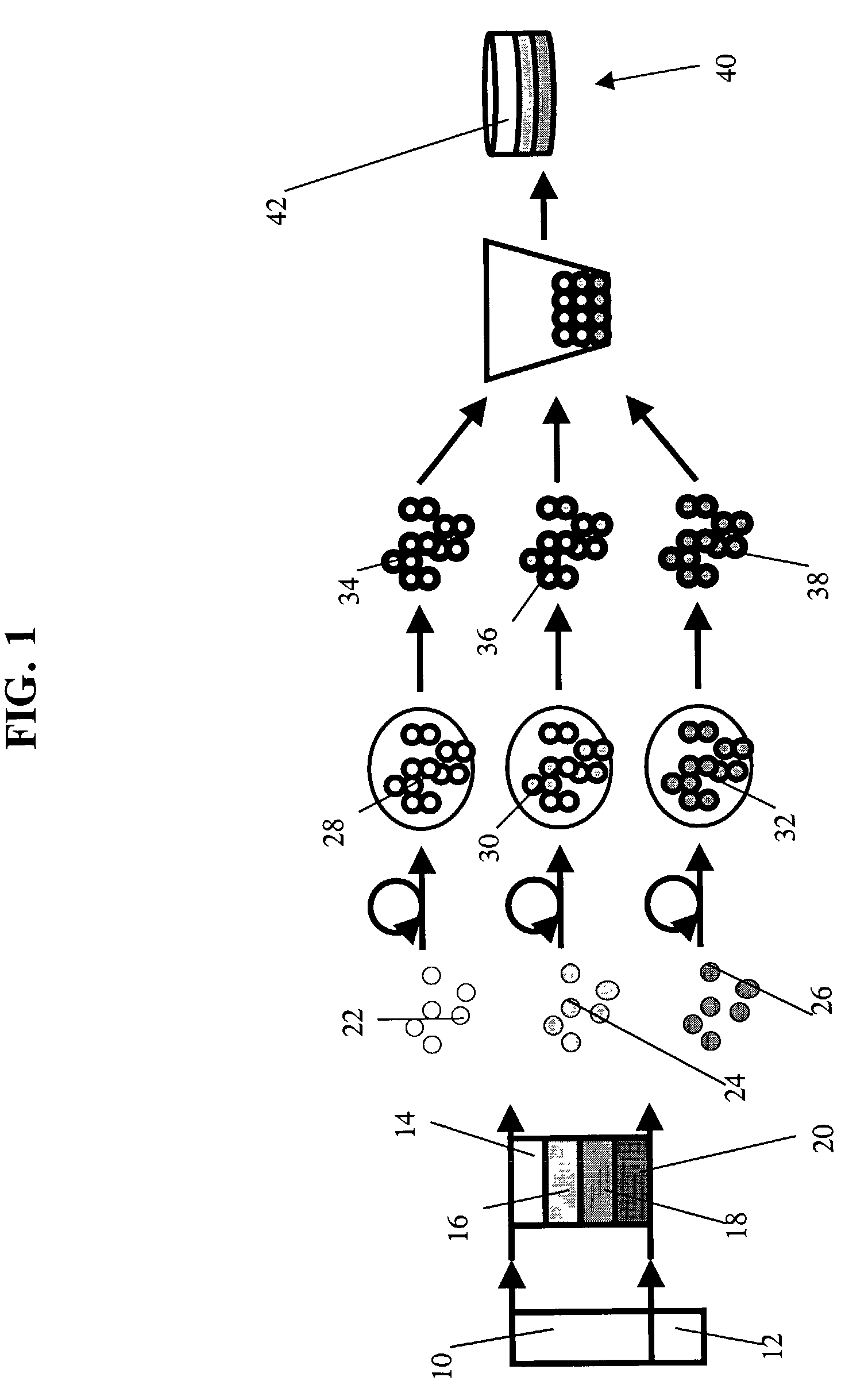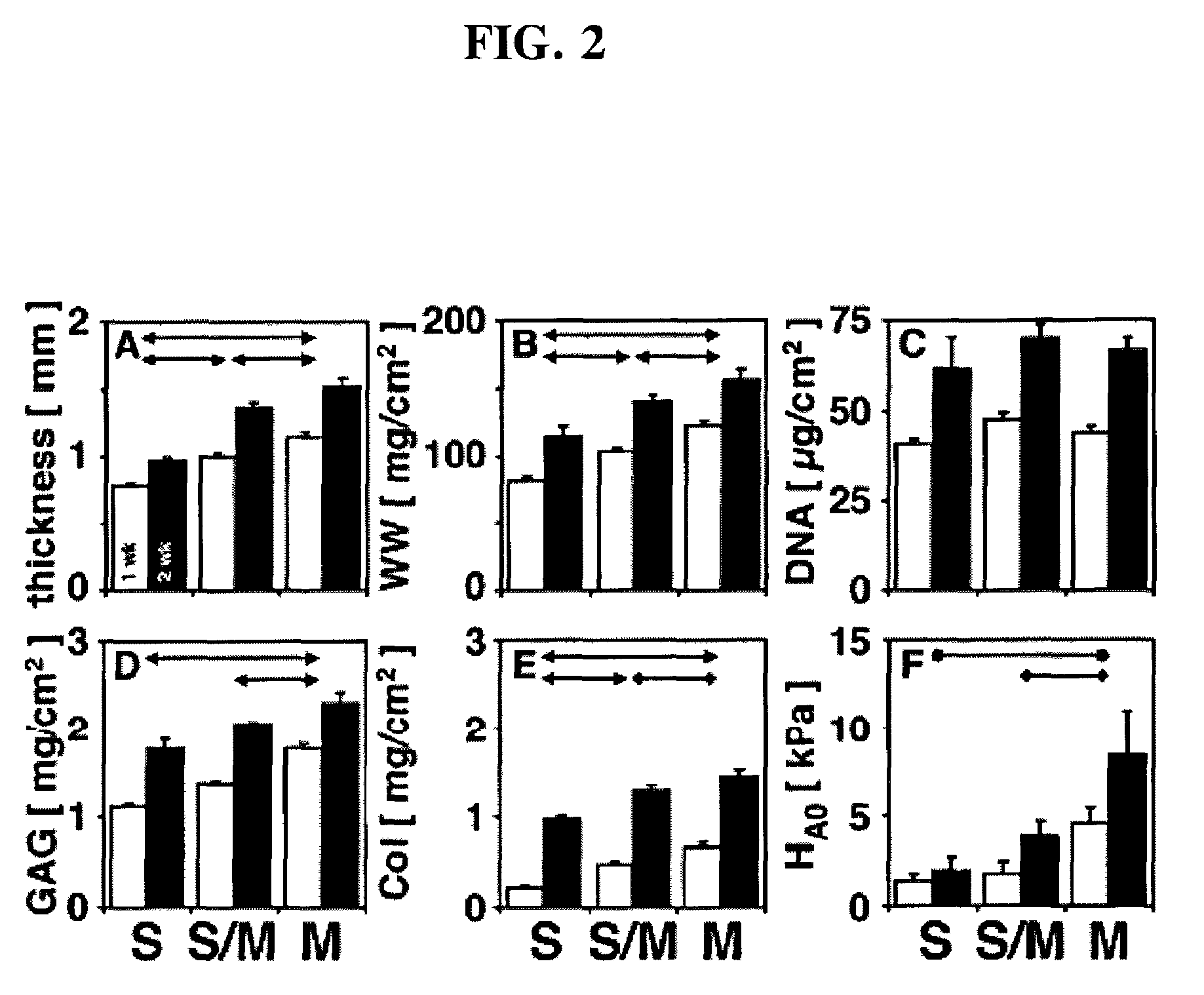Methods to engineer stratified cartilage tissue
- Summary
- Abstract
- Description
- Claims
- Application Information
AI Technical Summary
Benefits of technology
Problems solved by technology
Method used
Image
Examples
examples
[0075]Experimental Protocol: Articular cartilage slices from the superficial (0-200 μm) and middle (400-1600 μm) zones were harvested from the femoropatellar groove of bovine calf knees (1-3 wk old, 6 animals). Superficial and middle zone chondrocyte subpopulations were isolated by sequential digestion for 1 hour with 0.2% pronase (Sigma-Aldrich, St. Louis, Mo.) and 12 hours with 0.025% collagenase P (Roche Diagnostics, Indianapolis, Ind.). Mok, et al., J. Biol. Chem. 269, 33021-7 (1994). Chondrocytes were suspended in 1.2% alginate (Keltone LV, Kelco, Chicago, Ill.) in 150 mM NaCl at 4×106 cells / ml, expressed from a 22 gauge needle into a 102 mM CaCI2 solution to polymerize the alginate as small beads. Hauselmann, et al., Matrix 12, 116-29 (1992). The alginate beads were then transferred to a T-175 flask containing DMEM / F12 with additives (10% fetal bovine serum, 25 μg / ml ascorbate, 100 U / ml penicillin, 100 μg / ml streptomycin, 0.25 μg / ml Fungizone, 0.1 mM MEM non-essential amino ac...
PUM
| Property | Measurement | Unit |
|---|---|---|
| Permeability | aaaaa | aaaaa |
| Cohesive energy | aaaaa | aaaaa |
Abstract
Description
Claims
Application Information
 Login to View More
Login to View More - R&D
- Intellectual Property
- Life Sciences
- Materials
- Tech Scout
- Unparalleled Data Quality
- Higher Quality Content
- 60% Fewer Hallucinations
Browse by: Latest US Patents, China's latest patents, Technical Efficacy Thesaurus, Application Domain, Technology Topic, Popular Technical Reports.
© 2025 PatSnap. All rights reserved.Legal|Privacy policy|Modern Slavery Act Transparency Statement|Sitemap|About US| Contact US: help@patsnap.com



